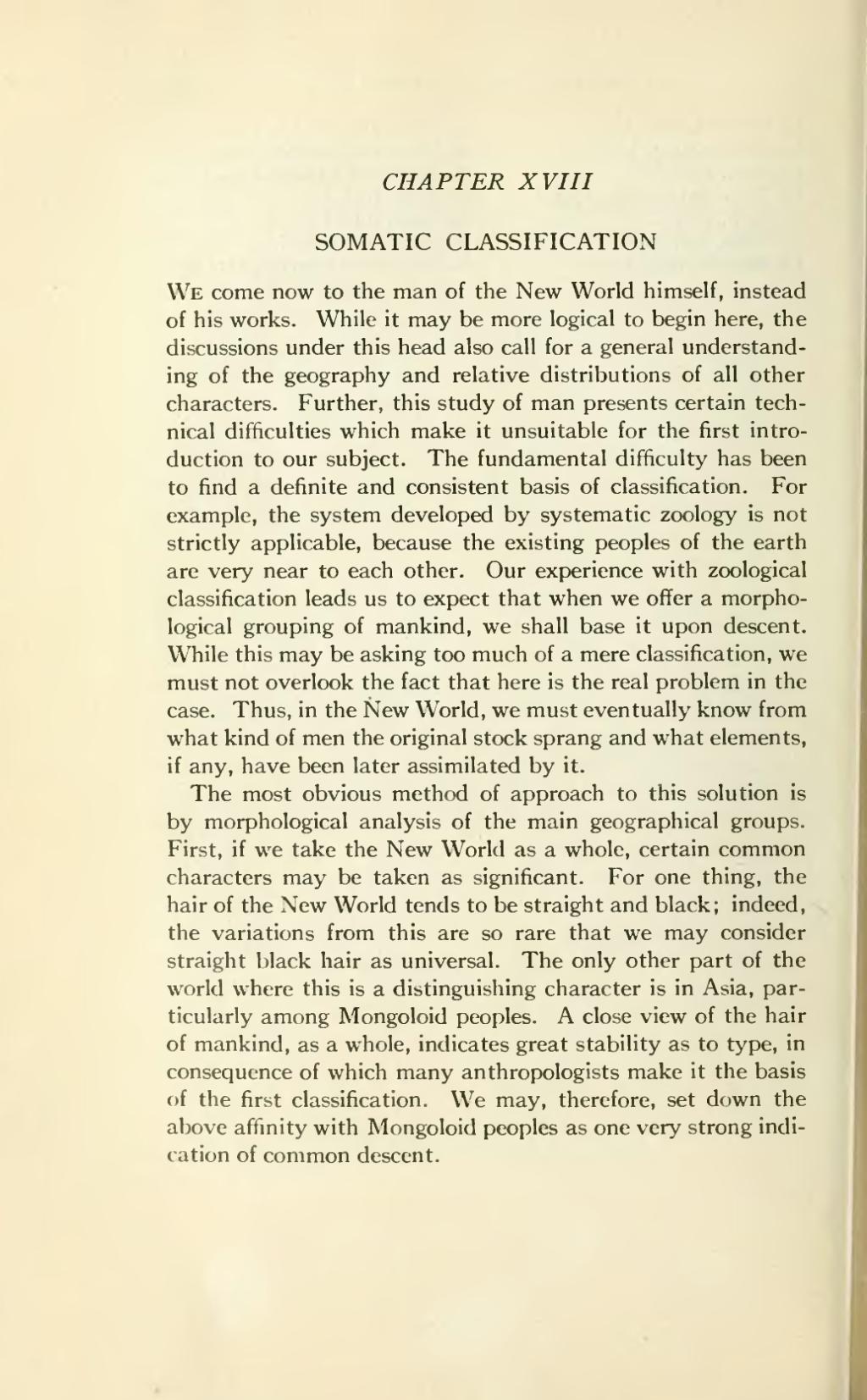CHAPTER XVIII
SOMATIC CLASSIFICATION
We come now to the man of the New World himself, instead of his works. While it may be more logical to begin here, the discussions under this head also call for a general understanding of the geography and relative distributions of all other characters. Further, this study of man presents certain technical difficulties which make it unsuitable for the first introduction to our subject. The fundamental difficulty has been to find a definite and consistent basis of classification. For example, the system developed by systematic zoology is not strictly applicable, because the existing peoples of the earth are very near to each other. Our experience with zoological classification leads us to expect that when we offer a morphological grouping of mankind, we shall base it upon descent. While this may be asking too much of a mere classification, we must not overlook the fact that here is the real problem in the case. Thus, in the New World, we must eventually know from what kind of men the original stock sprang and what elements, if any, have been later assimilated by it.
The most obvious method of approach to this solution is by morphological analysis of the main geographical groups. First, if we take the New World as a whole, certain common characters may be taken as significant. For one thing, the hair of the New World tends to be straight and black; indeed, the variations from this are so rare that we may consider straight black hair as universal. The only other part of the world where this is a distinguishing character is in Asia, particularly among Mongoloid peoples. A close view of the hair of mankind, as a whole, indicates great stability as to type, in consequence of which many anthropologists make it the basis of the first classification. We may, therefore, set down the above affinity with Mongoloid peoples as one very strong indication of common descent.
